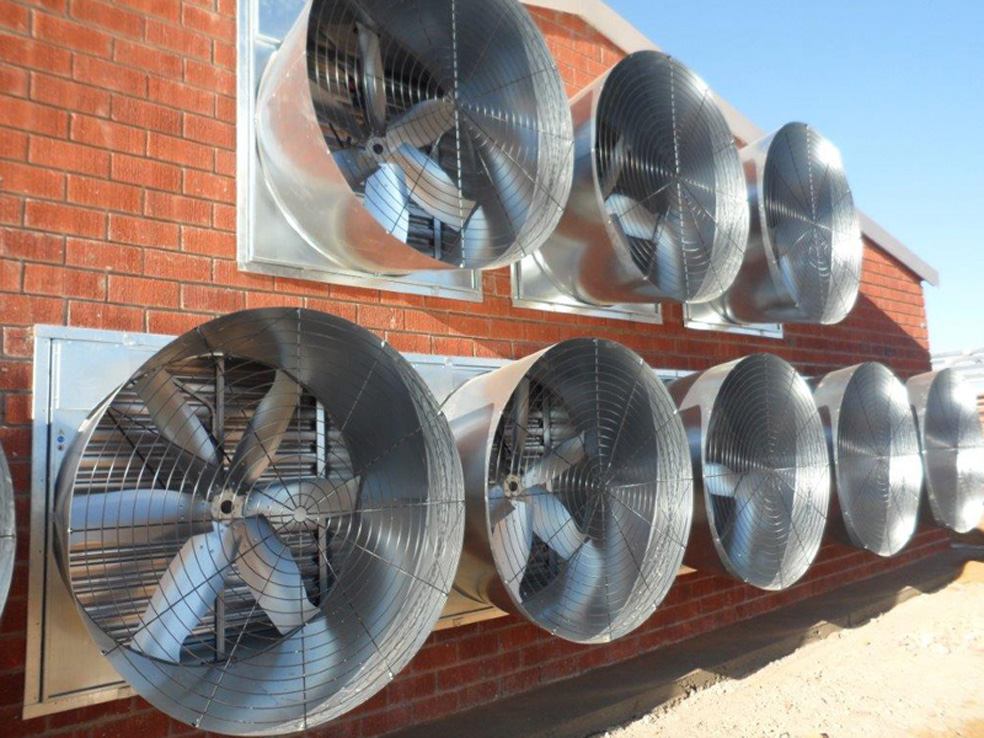Heat stress is the most important factor affecting poultry production: extreme temperatures obviously affect the birds very much resulting in high mortality rates and in loss of productivity. Anyway, already in correspondence with hot temperatures, that are typical during summer, we register losses in eggs production as well as a general disease.
Normally, birds reach the best output, or at least a general situation of wellness, when ambience temperatures are between 11 and 26°C. As soon as the outside temperature or the relative humidity rises above the thermoneutral zone (or comfort zone) the ability of the animals to dissipate heat decreases drastically.
The practical effect of this phenomenon is shown in a series of symptoms more and less serious and evident on the animals. Let’s go analyze them together.
Feed intake and growth rate
There is a negative relationship between temperatures and the amount of feed eaten. The reduced intake of energy is often associated with a limited growth. When birds are under heat stress, their bodies react with a feed reduction. When feed consumption is reduced, also the metabolic substrates and the energy useful for metabolism are limited with positive consequences in heat production.
Eggs production
Some studies show that eggs production has been reduced by up to 8% when temperatures rise form 21 to 32°C.
In the specific case of laying hens, the physiological data we registered in condition of heat stress have a particular importance in the egg quality parameters: from one side the reduction of egg size and on the other shell’s thickness and rigidity (internal and external) are also worsen.
Male fertility
A study was conducted to examine the effect of high temperatures male chicken fertility: semen volume was reduced by 50% compared to males exposed to 21°C. Fertility was also reduced by 28% under heat stress which underlines the importance of alleviating heat stress in males particularly during the breeding season.
Carcass quality
Long exposure to heat stress (33°C) may lead a tearing of the skin during the process of defeathering. Other problems, such as blood retention in the carcass, muscle stiffness, and dark pigmentation may also arise from exposure to heat stress prior to slaughter. These problems are more prevalent in females than in males, this explains why female carcasses are in many cases of low quality during the hot months of the year.
Furthermore, the physical changes occurring in the carcass under heat stress can affect also the chemical composition of the meat with particular reference to protein and fat.
There are many different ways to minimize the heat stress. In general, this goal can be achieved through proper equipment, with a right feeding and with abundant water administration.
Surely, air movement is one of the most effective solutions for refreshing the shed during the hot period: air flow eliminates excessive heat from the animal producing a fresh feeling (also called “windchill effect”), but also to ensure the proper supply of oxygen and eliminate metabolic substances such as moisture, ammonia and carbon dioxide.
Fans and cooling pads by Termotecnica Pericoli
Termotecnica Pericoli creates products that can solve the problem of excessive heat and relieve heat stress in poultry.
Combining the quality of “Made in Italy” with a 50-year experience and an R & D department equipped with the latest technology, we have developed a range of exhaust fans that achieve excellent – and certified – performances with regards to efficiency and energy consumption.
The fans are available in both the standard wall version – in different models and sizes – and in the conical one.
Also the evaporative cooling pad PERIcool is totally manufactured in Italy in a highly automated process and by using special odorless resins.
Based on the simple physical principle of adiabatic cooling, it is the perfect combination of ease of use, reliability and low operating costs, making it the perfect solution for solving the problem of excessive heat in large environments.
